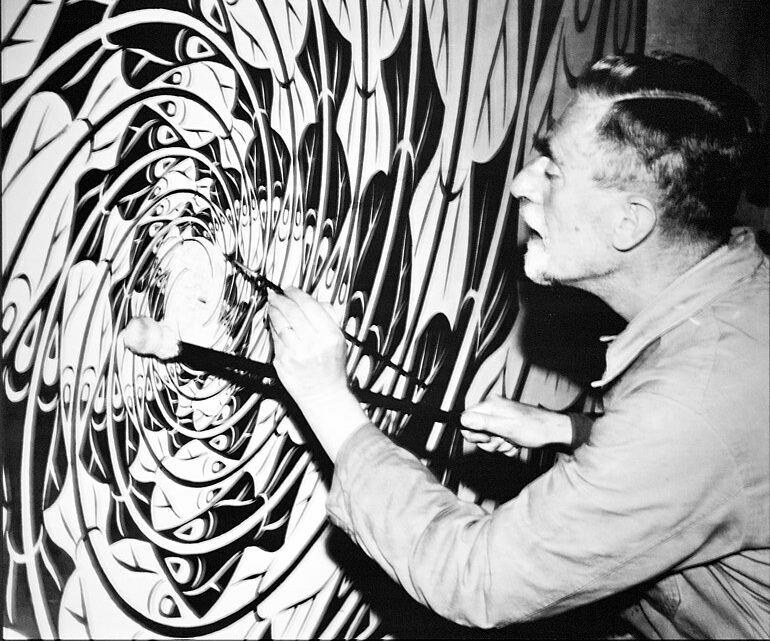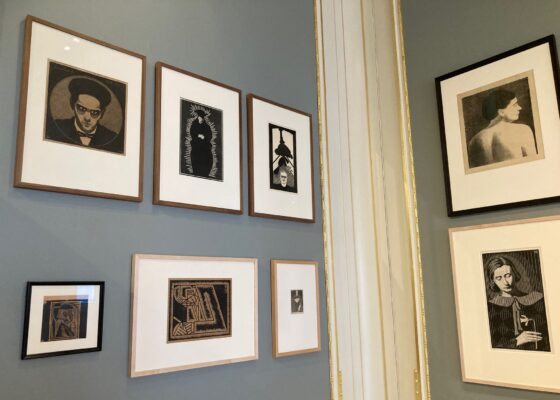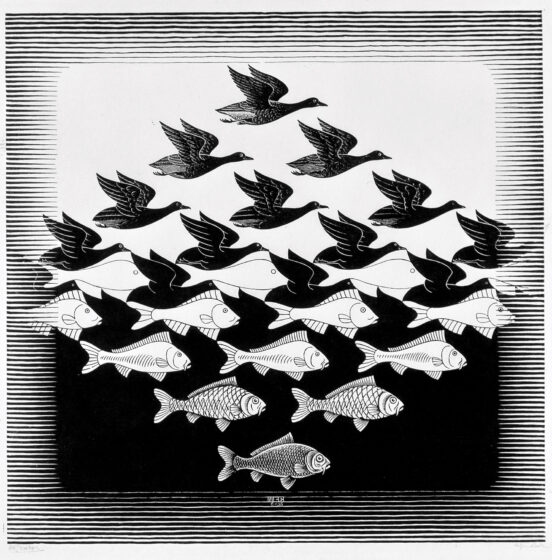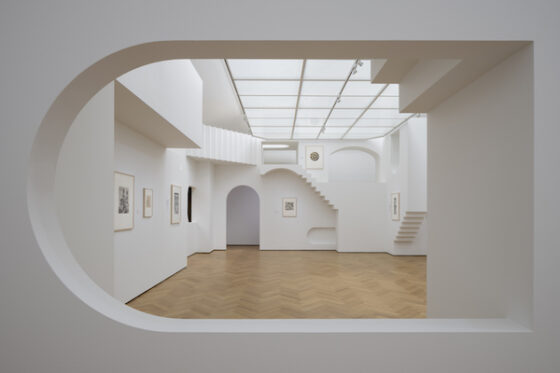Inburgering with Dutch News: Celebrating graphic artist MC Escher

This year it is 125 years since the birth of MC Escher who is considered to be one of the world’s best graphic artists. So it is only right that he should be covered in the Dutch News inburgering course.
Lesson 38: MC Escher
Early years
Maurits Cornelis Escher was born in Leeuwarden in 1898 into a relatively wealthy family as the fourth of four sons. His father was a civil engineer but Maurits himself wasn’t much good at anything except drawing and after a few parent-propelled side steps he landed at the School for Architecture and the Decorative Arts in Haarlem. Here he veered away from the architectural side ‘which didn’t interest me at all’ and plumped for the decorative arts.
De Mesquita
He was taught by painter and graphic artist Samuel Jessurun de Mesquita whose work he admired and who became a personal friend. When De Mesquita, his wife Betsy Pinedo and their son Jaap were taken from their home by the Nazis in 1944 Escher ran to their ransacked house and managed to save over a 100 prints. De Mesquita and his wife were killed in Auschwitz, their son in Theresienstadt.

Talking Italian
World War II was still a long way off when Escher left school in 1922. He traveled to Italy and Spain and, in 1924, married Swiss-Russian Giulia Umiker with whom he had three sons. The family lived in Rome – where Escher was completely unimpressed by the Renaissance and Baroque buildings that surrounded him but was instead fascinated by the Moorish architecture in southern Italy, ‘particularly the bun shaped roofs’.
The Eschers left Rome until the rise of Mussolini made it impossible to stay. After sojourns in Switzerland and Belgium the family returned to the Netherlands.
Inspiration
Escher had been spending his time abroad drawing landscapes and plants, elements of which returned in several of his works. Visits to the Alhambra Palace in Granada in Spain with its geometric Islamic tiles provided the inspiration for his 137 symmetrical drawings, almost half of which were made during the war years.

Fame
Escher’s international fame started in 1950 with a group exhibition in Antwerp which led to articles in both Time Magazine and Life Magazine. In 1954 the International Congress of Mathematicians was held in Amsterdam prompting an exhibition of Escher’s work at the Stedelijk Museum, which in turn led to his first major show at the White gallery in Washington.
Exhibitions in many other countries were to follow in the years to come, culminating in a show in Brazil in 2011 which attracted 780,000 visitors in six weeks.
Among Escher’s best-known symmetrical drawings are the mind-bendingly ‘impossible’ Ascending and Descending, Relativity,’and Metamorphosis I, II and III. In all Escher produced some 448 lithos, woodcuts cuts wood engravings during his lifetime, and over 2000 sketches and drawings.
Celebratory exhibitions
The Hague has bagged this Escher year, with the Kunstmuseum hosting A different world (until September 10) which combines Escher’s prints with the installations of Belgian duo Gijs Van Vaerenbergh.

Escher at the Palace honours Escher’s teacher and mentor Samuel Jessurun de Mesquita (until October 1). Just like Escher, also at the Palace concludes the series, with modern day artists’ interpretations of such favourite Escher themes as eternity, infinity, illusion, metamorphosis and repetition (until March 24).
It would be nice to know what Escher’s would make of these interpretations. Attempts to group him with the op-art movement of the early Sixties were dismissed by a non-plussed Escher who said ‘I am surrounded by riddles. I keep meeting young people who tell me: you are also making op-art. I don’t know what op-art is. I have been making this work for 30 years.’
Thank you for donating to DutchNews.nl.
We could not provide the Dutch News service, and keep it free of charge, without the generous support of our readers. Your donations allow us to report on issues you tell us matter, and provide you with a summary of the most important Dutch news each day.
Make a donation